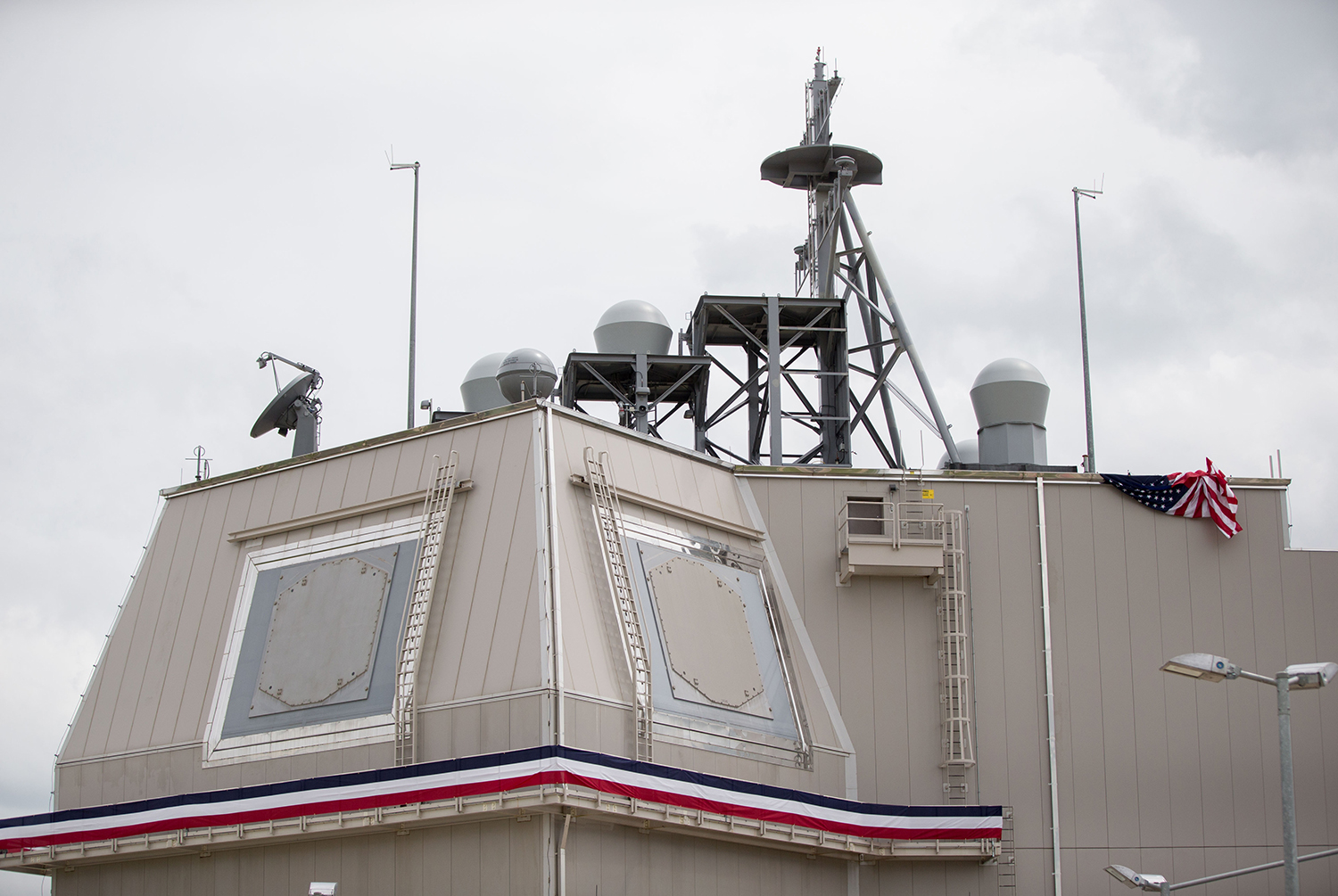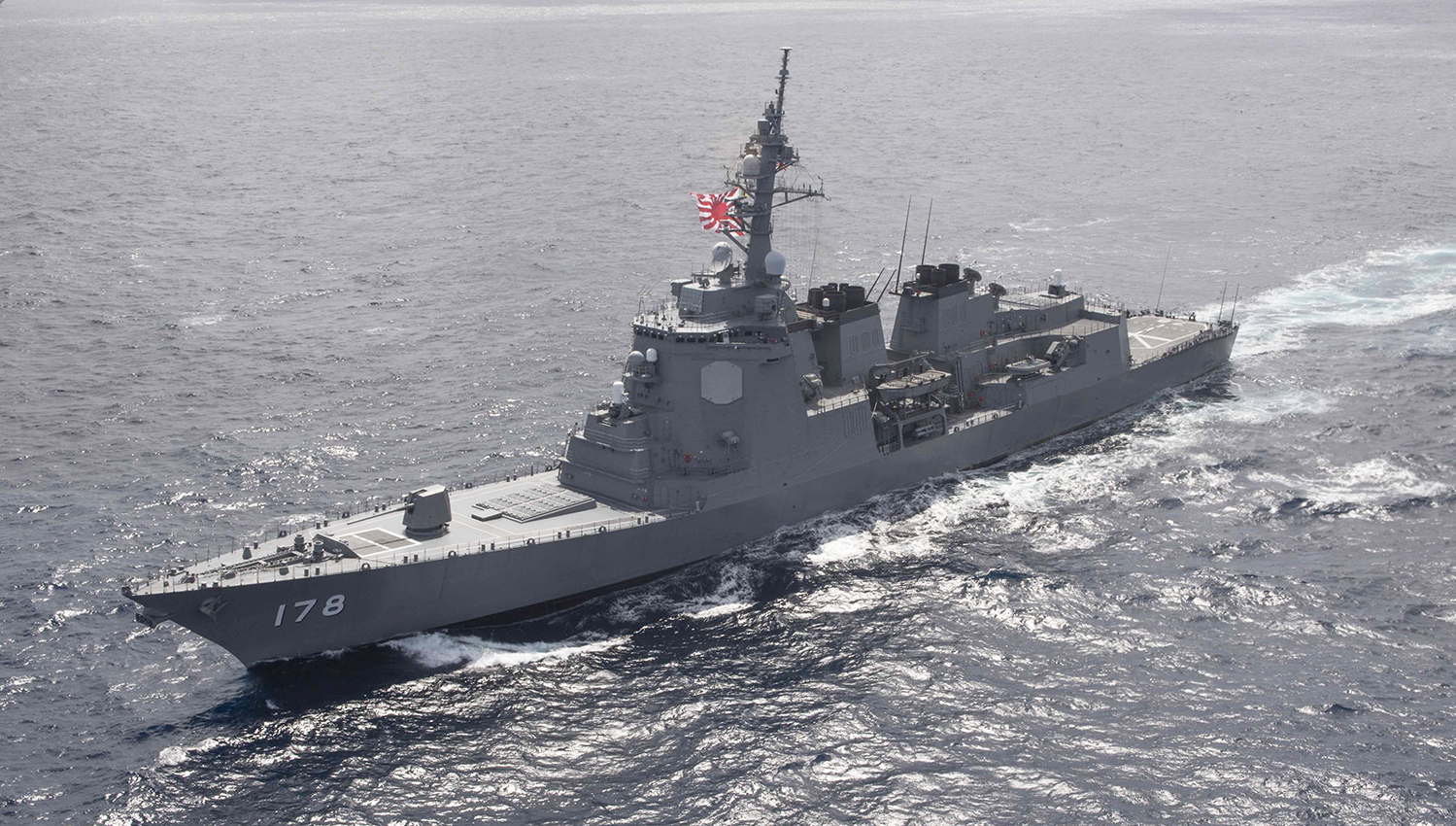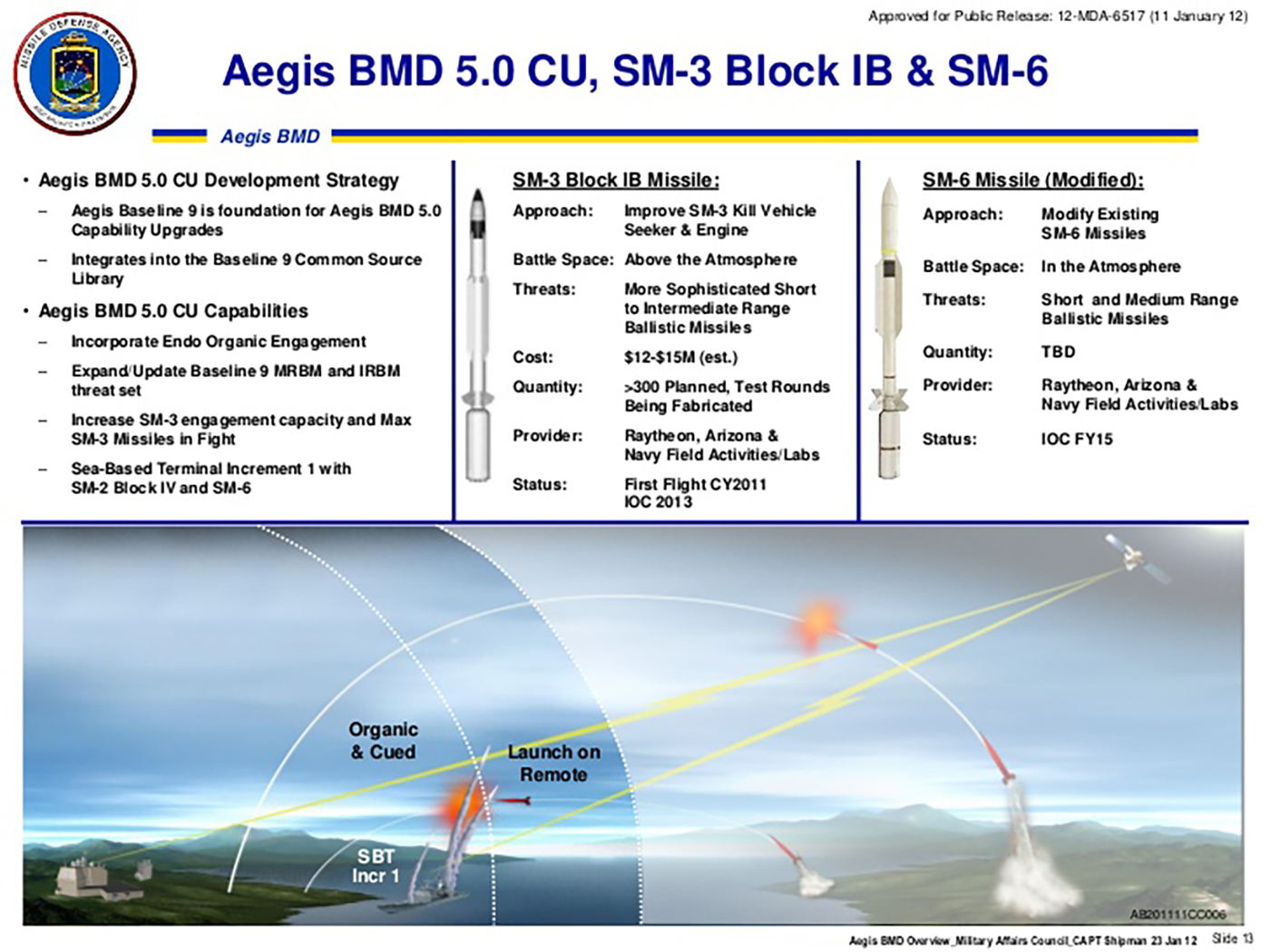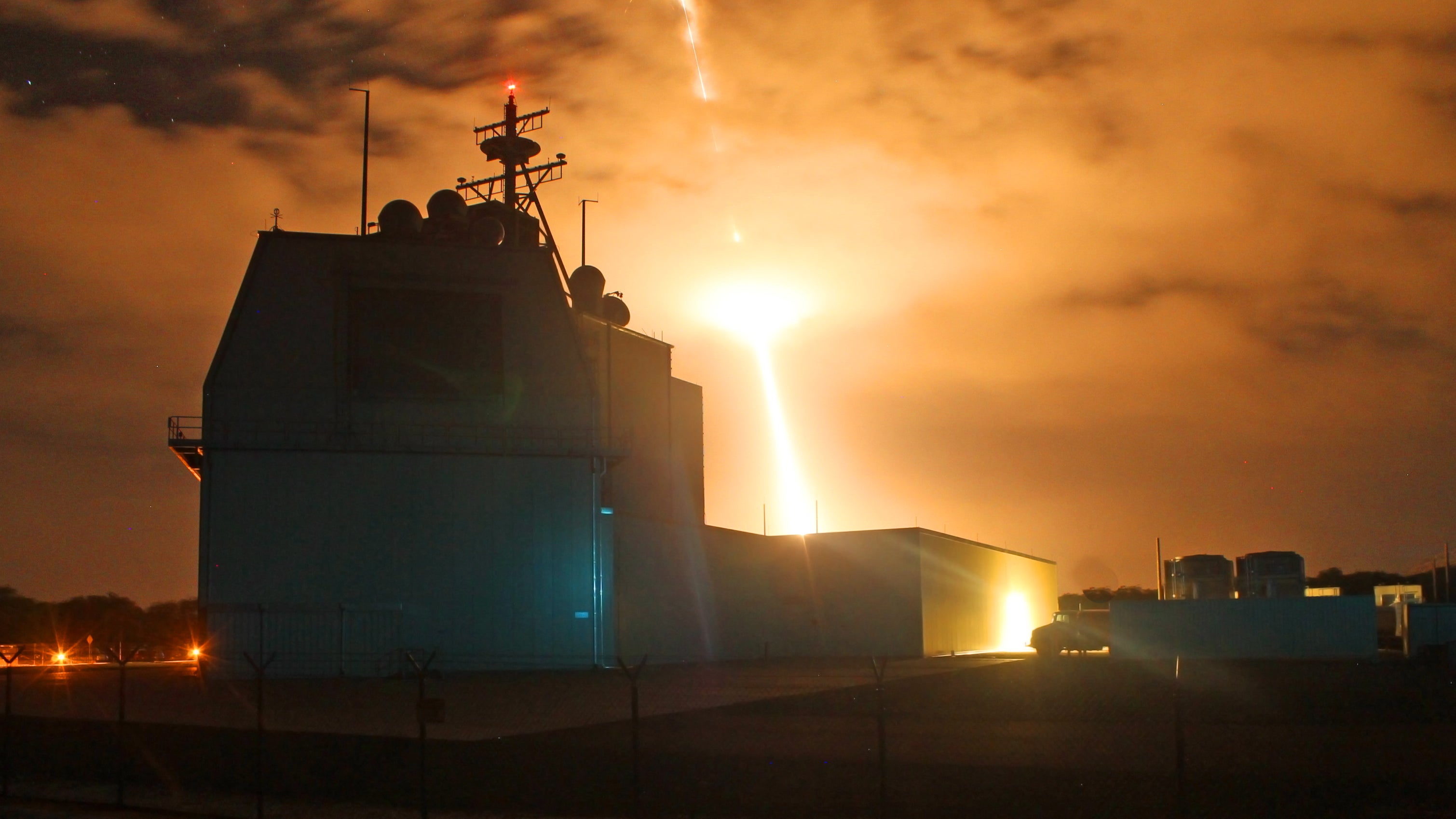Japan has accelerated a study examining if installing the Aegis Ashore anti-ballistic missile system would be an effective means of dealing with the increasing threat of a ballistic missile barrage from North Korea.
Japan has also looked into acquiring America’s Terminal Hight Altitude Area Defense (THAAD) system as an alternative to Aegis Ashore, but the increased coverage that Aegis Ashore provides would be more applicable to Japan’s unique geographic and strategic needs. Also, Aegis Ashore can better interoperate with Japan’s Aegis mid-course intercept capable destroyers, not to mention the fact that there is a high degree of commonality in sensors, launch components, weapons, and even operations between the two systems.
Cost is also an issue. Japan Times states that “THAAD costs about ¥125 billion ($1.1 billion) for each unit, and Japan would need around six units to protect the whole country. An Aegis Ashore unit costs about ¥80 billion and only two would be needed to cover the same amount of area.” Aegis Ashore would provide Japan with a two-tiered land-based anti-ballistic missile defense strategy, with their PAC-3 Patriot batteries offering a last line of defense against short and intermediate range missile warheads as they fall through the atmosphere towards their targets during the terminal phase of their attack profile.

Aegis ashore seems so well suited for Japan’s unique defensive needs that it almost would be strange if Japan were not to procure it. Japan has six Aegis equipped destroyers, four of which were outfitted for ballistic missile defense, with the other two being upgraded for the mission set by 2018. These ships can perform very similar tasks as Aegis Ashore, but doing so requires keeping a number of them on station continuously in the Sea of Japan to persistently counter the North Korean threat.
These ships are very expensive multi-role assets, and keeping them assigned just to offshore picket duty indefinitely would be a poor use of such a capable resource. That’s why installing a pair of Aegis Ashore batteries along Japan’s western coastline makes so much sense, as it takes the pressure off of Japan’s high-end destroyer fleet and allows for a more flexible defense posture that can be adapted to the circumstances at any given time.

For instance, during a time of heightened tensions, a Japanese Aegis equipped destroyer or two can augment the Aegis Ashore batteries, providing another line of defense. These systems can interoperate via data-link to work as a networked team—sharing information, prioritizing threats and assigning missiles to targets based on each system’s location, readiness state and available weapons. If an Aegis Ashore battery is down for service, the Japanese Maritime Self Defense Force can even send a ship to stand in for it temporarily.
Basically, for the cost of one Atago class destroyer, Japan can have two Aegis Ashore batteries providing constant monitoring and ballistic missile defense coverage against North Korea’s short to medium range ballistic missiles.
There is also additional value being added to America’s Aegis Ashore batteries in Poland and Romania in the form of a secondary anti-air warfare capability. In other words, with upgrades, these installations will be able to also fire on aircraft and cruise missiles, not just ballistic missiles.
In time, Aegis Ashore could feature the SM-6 missile alongside its hit-to-kill SM-3 interceptors. The SM-6 is capable of engaging certain ballistic missile threats during their terminal phase of flight, as well air breathing ones. SM-6 also has a secondary surface and land attack capability. As such, Japan’s Aegis Ashore stations could even potentially operate as a coastal defense system that leverages third party targeting data, such as that from maritime patrol aircraft, satellites or ships out at sea.

We will have to wait and see if Japan decides to move forward with Aegis Ashore after its study is completed, but one thing is certain—China will not be pleased if this system is installed on Japanese shores. The deployment of THAAD, which is non-permanent, has a more narrow engagement window and features an overall far more focused capability set, to South Korean remains a major issue for Beijing. But a pair of Aegis Ashore stations setup along Japan’s west coast would be seen as a much larger provocation—one that China would claim dilutes their own nuclear deterrent’s credibility significantly.
Considering the Trump Administration’s so far cozy relationship with China, it will be interesting to see how Washington would handle the final approval of the sale of such a politically sensitive weapon system to Japan, especially at a time when the US is leaning hard on China to take unprecedented measures to reign in the Kim regime in North Korea. In that respect, just Japan’s move to accelerate its study on acquiring Aegis Ashore likely puts even more pressure on China to get North Korea to deescalate, which really isn’t such a bad thing.
Contact the author: Tyler@thedrive.com
